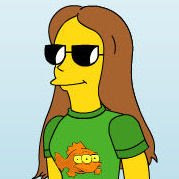The Art of Little Green Men: Spacey Sequel
In my past post, I looked at some examples of art from prehistory to the Renaissance that people have claimed depict spaceships and/or aliens.
Thirty-five years after first watching it, I fired up YouTube and once again viewed In Search of Ancient Astronauts, the 1973 program based on Erich von Daniken's book Chariots of the Gods. What really blew my mind at age 11 just doesn't impress me at all at age 46. In 60 minutes maybe a half dozen or eight items are presented as evidence of ancient aliens.
Certainly some things are difficult to explain, such as the Baghdad battery, but some of the artwork is questionable. The show included the Visoki Decani monastery I showed in the last post that has what seems to be men flying over Jesus in spaceships, are just ancient sun and moon symbols, and the one-eye guy from the Tassili mountain range that is probably not an astronaut but a man in a ceremonial mask and robe.
Looking again at art historian Diego Cuoghi's discussion of alleged medieval and Renaissance UFO pictures, I realized that many of the spacey sites are often using images with very low resolution. I mean, these images are really crappy and probably got this way from endless copying from one site to another. Cardinal hats, clouds with angels and a glowing Holy Spirit dove become spaceships! A globe of the earth becomes a Sputnik satellite -- 350 years before it was even launched!
No. 1 -- La Tebaide, or Scenes of Eremite Life, by Paolo Uccello, is a 15th century depiction of various saints and eremites, a type of hermit monk. The part of the painting where people saw a UFO was this one of St. Jerome before a crucifix:

It turns out that the "UFO" is actually a cardinal's hat with fringes on it; you can even still see the fringes in the bad reproduction of the St. Jerome part of the painting. Jerome was a cardinal before he became an eremite monk, and the hat is a symbol of him throwing aside that life. The animal next to Jerome is a lion. Legend says that he captured a lion, removed a thorn from its paw and tamed it, which sounds a lot like the Greek myth "Androcles and the Lion," but that's another story.
No. 2 -- God the Father and Jesus here look as if they are tending to a Sputnik globe in this painting, Exaltation of the Eucharist (1600), by Bonaventura Salimbeni, while a dove representing the Holy Spirit looks down. This is actually a globe of the earth. The "antennae" are actually wands or scepters, old symbols of royalty or authority (Jesus has often been called the "King of Kings"). The Father and Jesus here are using the scepters to draw lines of latitude and longitude on the earth. .The strange cylinder on the bottom of the globe is actually a drawing of the moon superimposed on the earth.

Away from European paintings and on to Egypt. The relief painting below has been posted on numerous UFO sites as evidence that a gray alien was included in ancient Egyptian art. This relief is in the tomb of Ptah-Hotep, a learned Egyptian who lived around 2300 B.C. under the rule of Pharoah Izezi of the Fifth Dynasty. The tomb is in Saqqara, Egypt, and the men in the carvings are shown bringing food to Ptah-Hotep as tributes. As this page shows, the alleged alien is actually a tall vase with lotuses. Two lotus buds are the alien's "eyes," and the vase itself is his body.

In conclusion, there are many bizarre artifacts out there, such as the rocket from Turkey, but other things that seem to show extraterrestrials are simply interpretations of murky images or, as Cuoghi noted, people not knowledgeable about ancient symbolism.


0 Comments:
Post a Comment
Subscribe to Post Comments [Atom]
<< Home